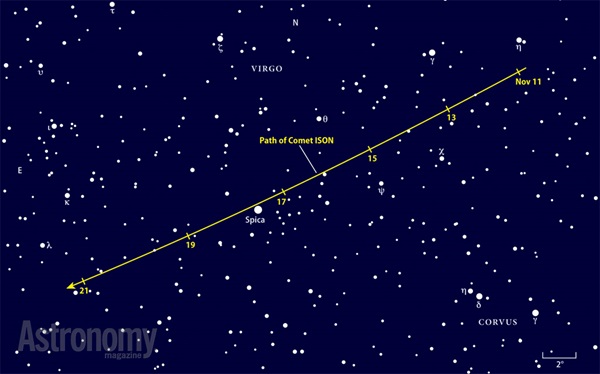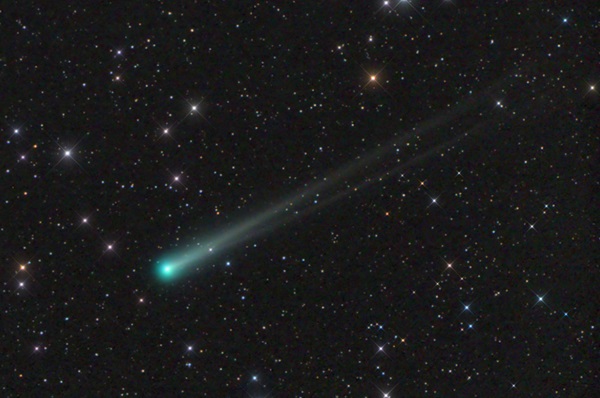Key Takeaways:
Comet ISON (C/2012 S1) continues to approach the Sun, destined to pass within 730,000 miles (1.16 million kilometers) of our star’s surface November 28. As the Sun looms larger and brighter in ISON’s sky, the heat warms the comet’s nucleus. The ices that make up ISON then sublimate (turn directly from a solid to a gas) at a greater rate, and the comet brightens significantly.
The proof of this scenario played out during November’s second week, when a major outburst caused ISON to grow some 10 times brighter. It now lies within reach of naked eyes for those who observe under a dark sky, and it has become prominent through binoculars and small telescopes. Unfortunately, totally dark skies will be hard to come by this week because the Moon reaches its Full phase November 17. Luckily, the brightest Moons will be in the western sky while the comet hangs in the east before dawn.
This week, ISON resides among the background of Virgo the Maiden. Your best guide is that constellation’s brightest star, 1st-magnitude Spica. On the 15th, the comet hangs 8° west-northwest of Spica (above it in the predawn sky). The gap closes to 5° the next day and to just 2° the day after that. If ISON’s tail glows brightly, it could look like the Sword of Damocles poised above the star. By November 18, the comet’s head appears just below Spica and the tail lies in front of it.
If you’re looking for a great photo opportunity, any of these mornings should work. You can get superb results with a digital single-lens reflex camera, a standard lens, and a sturdy tripod. Using manual (“M”) mode, set the lens aperture as wide as possible (the lowest f/ratio) and the ISO to 400. If you keep your exposures to 15 seconds or less, you’ll keep stars from trailing across your image. Experiment with different settings to see what works best under the conditions. Also try to find intriguing foreground scenes to add interest to your photos. Finally, don’t be afraid to shoot in twilight — the colors add a lot of visual appeal.
The comet should continue to brighten as the week progresses. Predictions show it shining at 4th magnitude November 21, when it rises just before twilight begins for observers at 35° north latitude. ISON should appear striking in the eastern sky an hour before sunrise. In just a week, the comet will make its closest approach to the Sun and should shine brightest.











